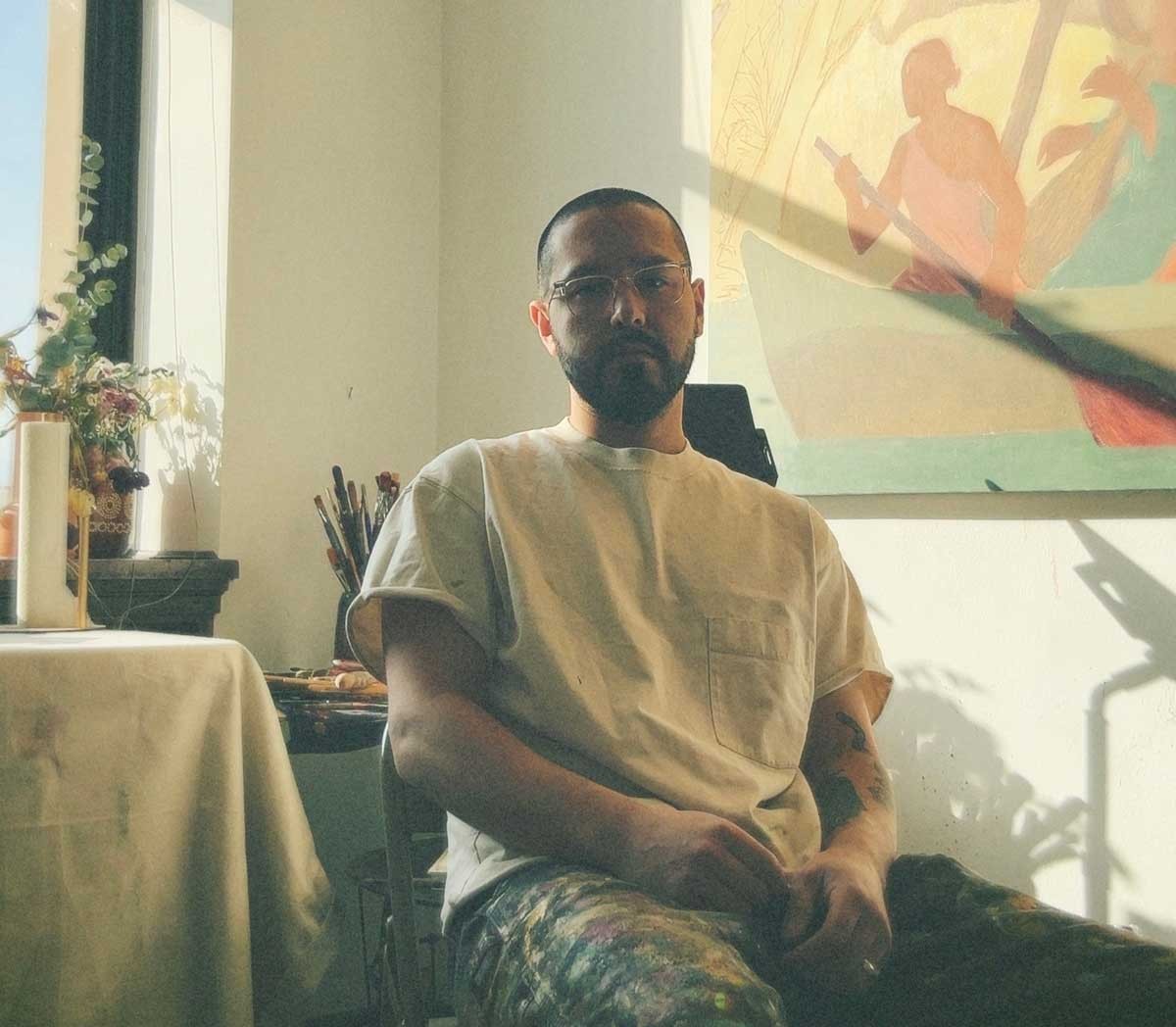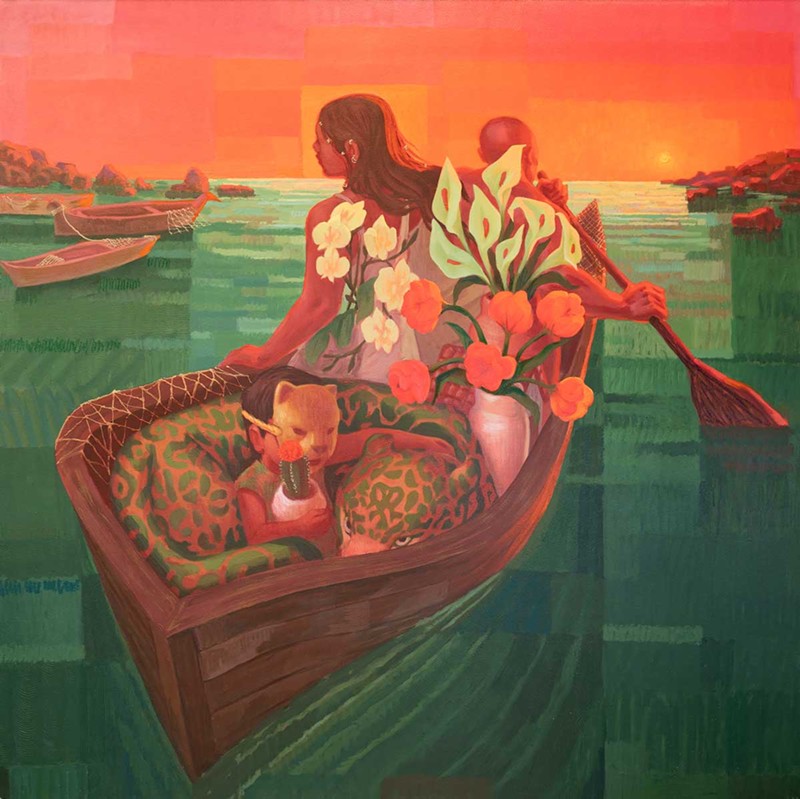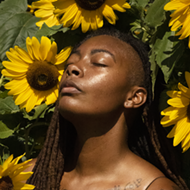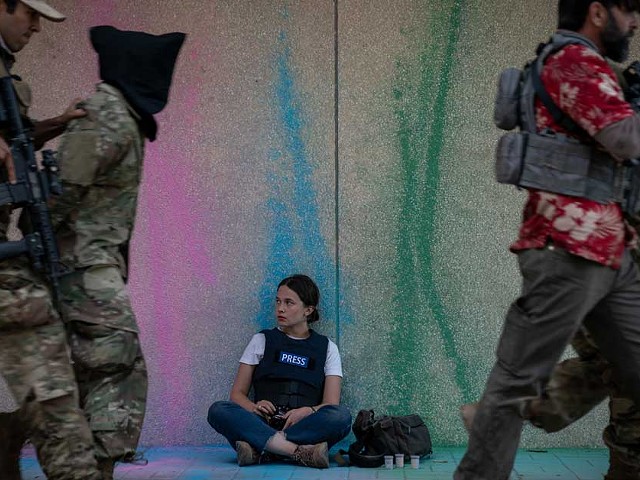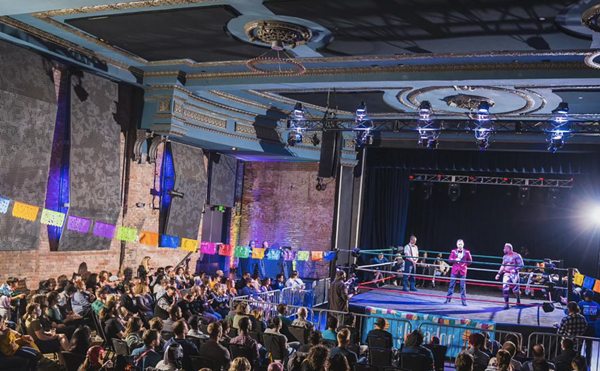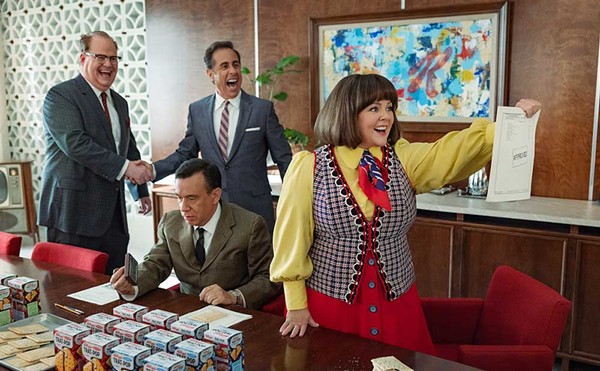We are born as seeds in soil fertilized by the experiences of our ancestors. For Detroit-based painter and muralist Ivan Montoya, the fertile soil we inherit from our familial lineage is like being given a canoe on open water without a map.
To steer the canoe into safe territory — a place that feels most aligned with the highest version of ourselves — we must inspect and understand how the lives of our ancestors have shaped our present.
That’s what Montoya is trying to get viewers to do with his solo show Sonde{a}r at Ferndale’s M Contemporary Art. The show opened on March 22 and is on view until April 20.
“In the birth state of this body of work, I was in Mexico City for a month with my wife and I was going to a lot of museums, learning about the colonialism of Mexico and the blending of cultures, but also the obliteration of some of the culture through the colonization,” he tells Metro Times.
Montoya has both Spanish and Indigenous Mexican ancestry, which he says gave him conflicting feelings about his heritage.
“There's so much complexity in the lineage and heritage aspects of the blending of cultures,” he says. “And that got me thinking, how else do I relate to my relatives [and] my ancestors… what responsibility [do] we have to learn about our relatives and the emotional battles that they dealt with? How should we honor them?”
Sonde{a}r is a morphing of the word “sonder” and the Spanish “sondear.” Sonder is the realization that every person you will ever meet or see in passing is living a life as complex as your own. In Spanish, “sondear” means to investigate or inquire and is “often used to explore the depths of actions, emotions, thoughts or the unknown,” Montoya writes in his exhibition statement.
A young family is making a voyage through deep, green waters towards the sunrise in a canoe in Montoya’s piece “Dawn Chorus.” While the male figure steers the boat forward and the woman looks on, a young boy sits at the back of the boat, cradled by a protective jaguar. A bouquet of calla lilies, orchids, and tulips bloom behind the parents, representing their memories as the little boy clutches a cactus with a tiny bloom popping out from the top. His life experience has just begun to flower.
“Each individual on that ship has their own experience,” Montoya explains. “The younger one is being taken care of by something other than the people on the ship… they’re looking for guidance elsewhere because the other figures are busy steering that generational ship.”
The painting has both a melancholy and hopeful feeling as the family treads through an ominous, deep ocean toward a sunnier horizon.
Montoya is a first-generation immigrant, born in Chihuahua, Mexico, who moved to the U.S. when he was 5 years old. He says melancholy and hope coincide to represent change, which is something he got used to as an immigrant. As a child, he didn’t quite understand why his family left his birthplace, leaving him with feelings of being from nowhere.
“I am neither from here nor from there,” he says. “I was raised here, so I don't necessarily feel a huge sense of belonging there. But I do feel a huge connection with my culture — my family, how we speak, our jokes, our food, everything — is from there. When I went to school here, I learned to socialize. I learned how to become myself here… It's this weird battle.”
Going back to the young boy in “Dawn Chorus,” Montoya says, “That’s the melancholy for me, is having to find other guides, other feelings of support elsewhere while the relative steering the ship has a sight that’s beyond what I understand. I think that happens a lot with the children of immigrants. We don’t understand why we’re being brought into these big changes, but it’s all in the hopes of better — better opportunities, more safety, more comfort.”
The whole show takes us on Montoya’s journey of mounting a generational shift with each piece representing a different mindset on the path towards becoming. For example, “Grown” shows us a time when Montoya felt he had outgrown his life circumstances with a figure inside a shelter that’s too big for him as he cradles a water lily. “Aislada (Landlocked)” is for when he felt content, not worried about where he’s going or where he’s been.
No matter where we are on the journey, Montoyta reminds us, that our ancestors (both human and non-human) are always there to help. In “Levantate, Mija (Rise, Child)” a pair of herons pull a sleeping woman from shallow water with a fishnet.
“She was maybe lost in her journey, and the herons in this image for me are her ancestors. The people in her lineage that she relates to are reminding her of who she is and are helping her,” Montoya says. “‘Mija’ is an endearing term for daughter, and ‘levantate’ means rise. So it just feels like a comforting phrase like, ‘rise, you're gonna be fine. We've got you.’ And I think that kind of realization happens sometimes when people do decide to look into the emotional battles that their relatives have had. I think maybe sometimes we're faced with feelings that we don't know where they're coming from, like anger, or this deep sadness, but then you hear stories of like, ‘Oh, my grandmother had depression, they just didn't have a name for that then.’”
He adds, “I would hope for the audience to maybe think about where they fit in [their] lineage and what kind of responsibility they feel like they have to that lineage, if any, at all.”

